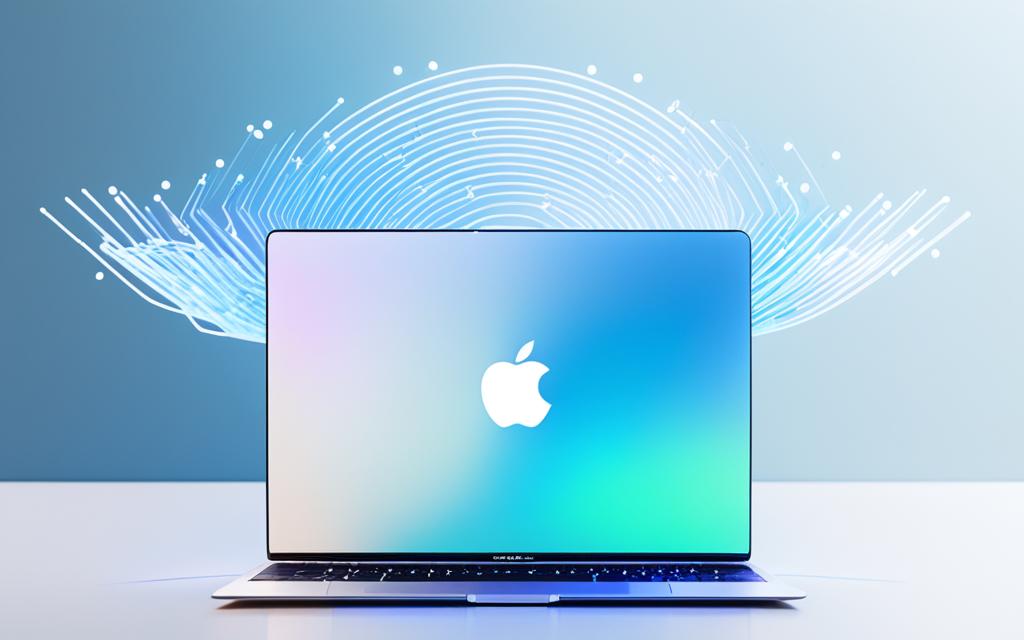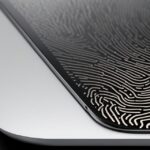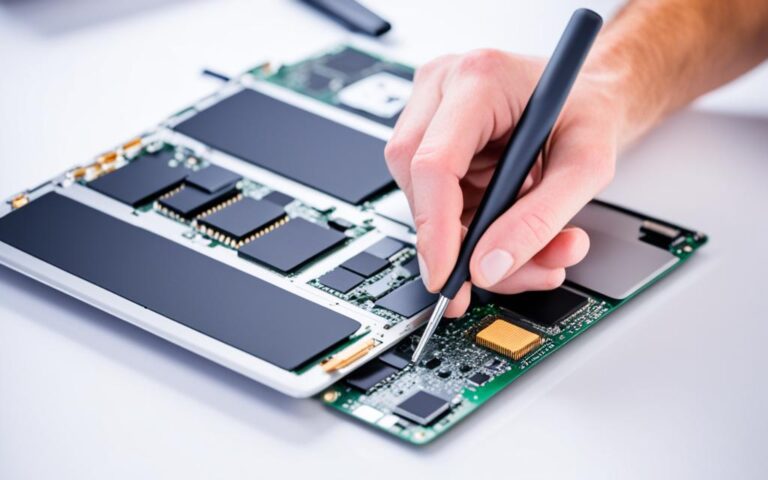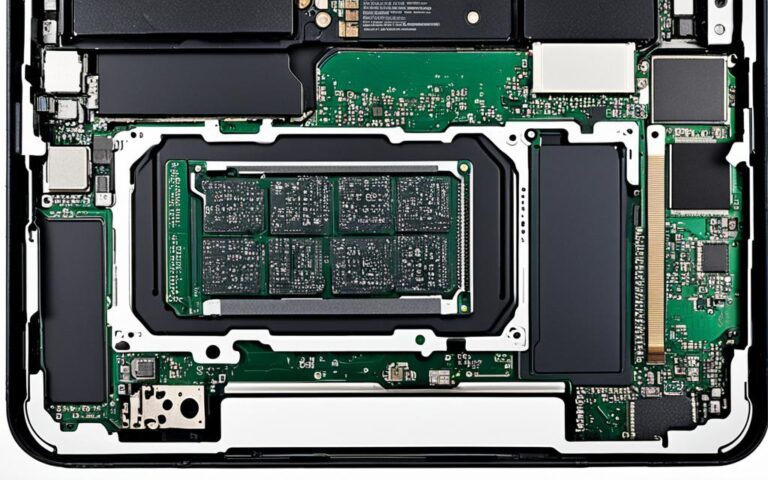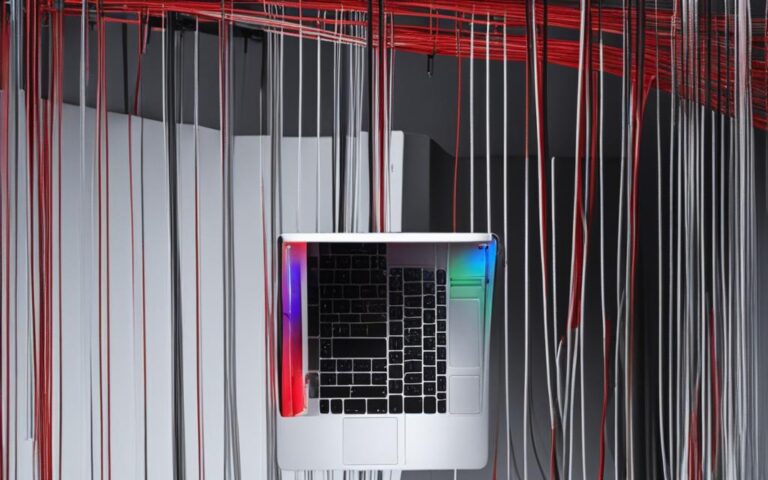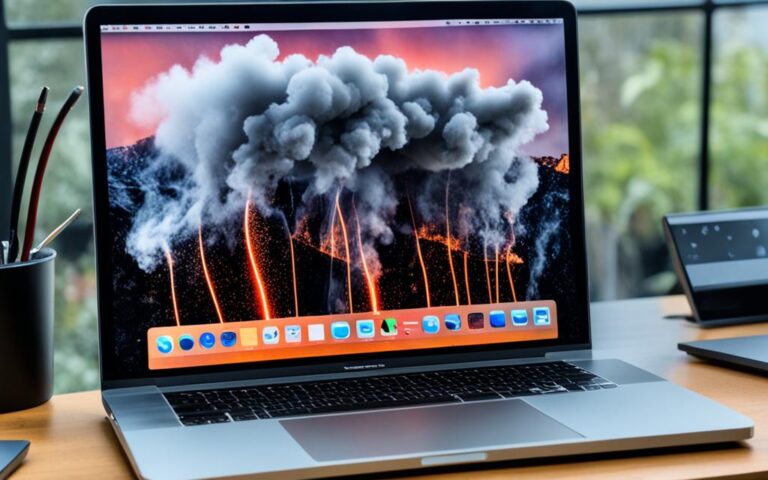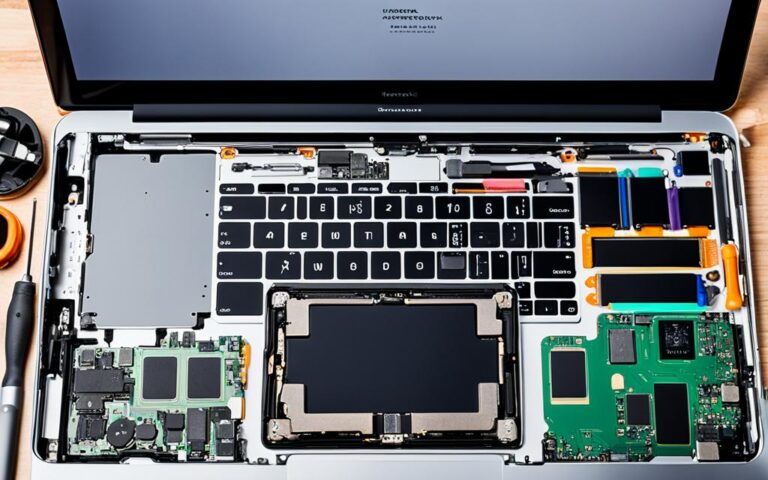Fixing MacBook Air Bluetooth Connectivity
Are you experiencing Bluetooth connectivity issues with your MacBook Air? Don’t worry, you’re not alone. Bluetooth problems can be frustrating, but there are solutions to troubleshoot and fix them. In this article, we’ll provide you with practical tips and tricks to ensure stable wireless connections on your MacBook Air. Whether you’re having trouble pairing devices or experiencing intermittent connections, we’ve got you covered. Let’s dive in and troubleshoot MacBook Air Bluetooth connectivity issues.
Before we get started, it’s important to note that these troubleshooting methods can also be applied to other Mac models. So, even if you’re using a MacBook Pro or iMac, you’ll find these tips useful. Let’s take a look at some simple steps you can take to troubleshoot Bluetooth connectivity on your MacBook Air.
Firstly, it’s essential to ensure that your macOS is up to date. Apple regularly releases software updates that address known Bluetooth issues and enhance device compatibility. Keeping your operating system updated can significantly improve Bluetooth connectivity. To check for updates, go to the Apple menu, click on “System Preferences,” and select “Software Update.”
Next, make sure that your Bluetooth devices are charged and turned on. Sometimes, connectivity issues can arise if a device has low battery or is switched off. Check the battery levels of your Bluetooth devices and ensure they are powered on. Additionally, it’s worth considering proximity. Keep your Bluetooth devices within the recommended range for optimal connectivity.
If you’re still experiencing Bluetooth issues, it may be helpful to reset the Bluetooth module on your MacBook Air. This can resolve software-related problems that might be causing connectivity issues. We’ll walk you through how to reset the Bluetooth module in the later sections.
In the following sections, we’ll provide detailed steps to troubleshoot common Bluetooth problems on your MacBook Air. From unpairing and re-pairing devices to removing potential interference, we’ll cover everything you need to know. Stay tuned for expert advice and tips to achieve stable Bluetooth connectivity on your MacBook Air.
Tips for Fixing Mac Bluetooth Issues
If you’re experiencing Bluetooth issues on your Mac, don’t worry – there are several troubleshooting steps you can take to resolve common problems. Follow these tips to get your Mac’s Bluetooth connectivity back on track.
1. Check for Software Updates
Keeping your Mac’s software up to date is essential for optimal Bluetooth performance. To check for updates, follow these steps:
- Click on the Apple menu in the top left corner of your screen.
- Select “Software Update” from the dropdown menu.
- If updates are available, click “Update Now” and follow the on-screen instructions.
2. Power Cycle Devices
Sometimes, simply power cycling your Mac and Bluetooth devices can resolve connectivity issues. Follow these steps:
- Turn off your Mac and any Bluetooth devices connected to it.
- Wait for a few seconds, then turn them back on.
- Attempt to reconnect the Bluetooth devices.
3. Unpair and Re-pair Devices
If you’re still experiencing problems, unpairing and re-pairing your Bluetooth devices can often help. Here’s how:
- Go to “System Preferences” on your Mac.
- Select “Bluetooth.”
- Find the device that’s giving you trouble and click on the “X” next to it to unpair.
- Put your Bluetooth device into pairing mode (refer to the device’s manual for instructions).
- On your Mac, select “Connect” next to the device’s name when it appears in the Bluetooth devices list.
4. Reboot Your Mac
Sometimes, a simple reboot of your Mac can resolve Bluetooth issues. Try restarting your Mac and see if the connectivity problems persist.
5. Check for Interference
Interference from other devices can disrupt Bluetooth signals. Keep the following in mind:
- Move your Bluetooth devices closer to your Mac to minimize potential interference.
- Remove any other devices that emit signals in close proximity to your Bluetooth devices, such as cordless phones or microwave ovens.
- Consider changing the frequency of your WiFi devices, as they can interfere with Bluetooth connectivity.
Remember to keep your USB/Thunderbolt hubs away from your Bluetooth devices, as they can cause signal interference as well.
By following these troubleshooting tips, you can overcome Mac Bluetooth issues and enjoy a stable and reliable connection. If the problem persists, further assistance from Apple Support may be required.
Removing Interference for Better Bluetooth Connectivity
When it comes to achieving optimal Bluetooth connectivity, interference can be a frustrating hurdle to overcome. Fortunately, there are several steps you can take to minimize interference and enjoy seamless Bluetooth connections on your devices.
Bringing Bluetooth Devices Closer Together
One effective way to reduce interference is by bringing your Bluetooth devices closer together. Physical distance can weaken the Bluetooth signal, so minimizing the space between your devices can improve connectivity. Try positioning your devices within a close range to establish a stronger and more stable connection.
Removing Other Signal-Emitting Devices
Another source of interference for Bluetooth devices can be other devices that emit signals. If you have other electronic devices, such as wireless speakers or cordless phones, in close proximity to your Bluetooth devices, consider moving them or turning them off temporarily to reduce signal interference. By doing so, you can optimize your Bluetooth connections without any unwanted disruptions.
Moving WiFi Devices to a Different Frequency
WiFi devices operating on the same frequency as Bluetooth can also create interference. If you’re experiencing connectivity issues, try moving your WiFi devices to a different frequency band. Most modern WiFi routers offer dual-band functionality, allowing you to switch to a frequency that doesn’t overlap with the Bluetooth band. This simple adjustment can significantly improve Bluetooth connectivity by reducing interference.
Keeping USB/Thunderbolt Hubs Away from Bluetooth Devices
USB/Thunderbolt hubs, which are essential for connecting various peripherals to your computer, can sometimes interfere with Bluetooth signals. To avoid this interference, keep the USB/Thunderbolt hubs away from your Bluetooth devices. Physical separation between the two can minimize any potential disruptions caused by signal interference.
Turning Off Unused USB Devices
Lastly, if you have any unused USB devices connected to your computer, consider turning them off. While these devices may not seem directly related to Bluetooth connectivity, they can still emit signals that interfere with the Bluetooth signal. By powering off unused USB devices, you can reduce the chances of interference and improve the overall performance of your Bluetooth connections.
By implementing these interference removal strategies, you can enhance the Bluetooth connectivity of your devices and enjoy seamless wireless communication. Remember to position Bluetooth devices closer together, remove signal-emitting devices, adjust WiFi frequencies, keep USB/Thunderbolt hubs separate, and turn off unused USB devices for optimal performance. With these simple steps, you can bid farewell to interference-related Bluetooth issues and enjoy uninterrupted wireless connections.
Resetting the Mac’s Bluetooth Module
If you’re experiencing Bluetooth connectivity issues on your Mac running macOS Monterey or an earlier version like Big Sur, resetting the Bluetooth module can often help resolve the problem. This section will guide you through the process of resetting the Bluetooth module using Terminal commands and highlight the importance of re-pairing your Bluetooth devices afterwards.
Resetting the Bluetooth Module in macOS Monterey
- Open Terminal, either by searching for it in Spotlight or navigating to Applications > Utilities > Terminal.
- In the Terminal window, type the following command:
sudo pkill bluetoothd - Press Enter to execute the command. You may be prompted to enter your administrator password.
- After executing the command, the Bluetooth module will be reset.
It is important to note that resetting the Bluetooth module in macOS Monterey does not remove all paired devices. Your previously paired devices should still be visible in the Bluetooth preferences.
Resetting the Bluetooth Module in macOS Big Sur and Earlier Versions
In macOS Big Sur and earlier versions, there is an additional option to remove all Bluetooth devices and reset the module. This can be useful if you’re experiencing persistent Bluetooth issues.
Note: Resetting the Bluetooth module in macOS Big Sur and earlier will remove all Bluetooth devices from your Mac. You’ll need to re-pair them afterwards.
- Go to the Apple menu and select System Preferences.
- Click on Bluetooth to open the Bluetooth preferences.
- Press and hold the Option (⌥) key on your keyboard. The “Disconnect All” button will change to “Remove All” while holding the Option key.
- Click on the “Remove All” button to remove all Bluetooth devices from your Mac.
- After removing all devices, the Bluetooth module will be reset.
Remember, after resetting the Bluetooth module, you’ll need to re-pair your Bluetooth devices to establish a connection. Follow the instructions provided by the manufacturer of your Bluetooth device to complete the pairing process.
After resetting the Mac’s Bluetooth module, your device should now be ready for stable and reliable Bluetooth connections. In the next section, we’ll explore the option of using USB dongles for direct connection, which can be a great alternative to troubleshoot Bluetooth issues.
Using USB Dongles for Direct Connection
One effective solution to eliminate Bluetooth issues and ensure a direct and stable connection is to use USB dongles. USB dongles act as wireless receivers, allowing you to connect third-party mice and keyboards directly to your MacBook Air without relying on Bluetooth connectivity.
This option is commonly available for various third-party mice and keyboards, offering a reliable alternative to Bluetooth connections. By utilizing a USB dongle, you can bypass any Bluetooth-related problems and enjoy seamless connectivity for your peripherals.
It’s worth noting that even Apple’s Magic Mouse and Magic Trackpad can benefit from using USB dongles. In some cases, users have reported improved scrolling and tracking performance when utilizing a USB connection instead of Bluetooth.
Suggested USB Dongles for Mac:
| Brand | Model | Compatibility |
|---|---|---|
| Logitech | Unifying Receiver | MacBook Air, MacBook Pro |
| Microsoft | Wireless Desktop USB Receiver | MacBook Air, MacBook Pro, iMac |
| RAPOO | USB Wireless Adapter | MacBook Air, MacBook Pro, iMac |
These USB dongles provide a convenient and reliable way to connect external peripherals directly to your MacBook Air, bypassing any potential Bluetooth issues. Remember to consult the respective manufacturers’ websites for detailed compatibility information and installation instructions.
Troubleshooting Bluetooth Issues on macOS Big Sur and Monterey
If you’re experiencing Bluetooth problems on your Mac running macOS Big Sur or Monterey, don’t worry. There are several troubleshooting steps you can take to resolve these issues and get your Bluetooth devices working smoothly again.
Browsing the web and checking for software updates should be your first course of action. Apple regularly releases software updates that address various bugs and compatibility issues. To check for updates:
- Click on the Apple menu in the top-left corner of your screen
- Select System Preferences
- Go to Software Update
- Click on “Update Now” if an update is available
Keeping your Mac up to date with the latest software ensures that you have access to the latest bug fixes and improvements for Bluetooth connectivity.
If updating your software doesn’t solve the issue, try reloading your Mac. A simple restart can sometimes resolve temporary glitches and conflicts. To do this:
- Click on the Apple menu
- Select Restart
- Wait for your Mac to reboot
If reloading your Mac doesn’t do the trick, ensure that your Bluetooth devices are turned on and within range. Sometimes, devices can spontaneously disconnect or fail to connect due to low battery or being out of range. Check the batteries on your Bluetooth devices and move them closer to your Mac to establish a stable connection.
For more persistent Bluetooth problems, you may want to consider factory resetting your device. This should only be done as a last resort, as it will erase all data on your Mac and restore it to its original settings. Remember to back up any important files before proceeding with a factory reset.
For additional assistance, you can refer to Apple’s support website or contact their customer support directly.
| Issue | Troubleshooting Steps |
|---|---|
| Bluetooth devices not connecting | 1. Check device compatibility 2. Turn off and on Bluetooth 3. Restart your Mac |
| Bluetooth connection drops frequently | 1. Move devices closer to your Mac 2. Remove any obstructions 3. Check for interfering devices |
| Bluetooth audio quality is poor | 1. Ensure your Bluetooth devices are fully charged 2. Keep devices within range 3. Update device firmware |
| Bluetooth device not recognized by Mac | 1. Remove and re-pair the device 2. Update macOS to the latest version |
Conclusion
In conclusion, troubleshooting Bluetooth issues is crucial for maintaining stable wireless connections on your MacBook. By following the tips and tricks outlined in this article, you can resolve common problems and enjoy seamless Bluetooth connectivity.
Whether you are facing connectivity issues on your MacBook Air or any other Mac model, these troubleshooting steps are applicable. Remember to keep your macOS up to date and ensure that your Bluetooth devices are charged and turned on.
From resetting the Bluetooth module to removing interference and using USB dongles, there are various approaches you can take to resolve Bluetooth issues. It is important to check for software updates, power cycle devices, unpair and re-pair Bluetooth devices, and take steps to eliminate interference from other devices.
By implementing these strategies, you can enhance the Bluetooth connectivity on your MacBook and enjoy uninterrupted wireless connections with your peripherals. Troubleshooting Bluetooth problems will help you make the most out of your Mac experience.
